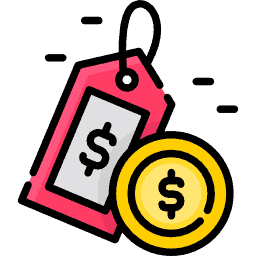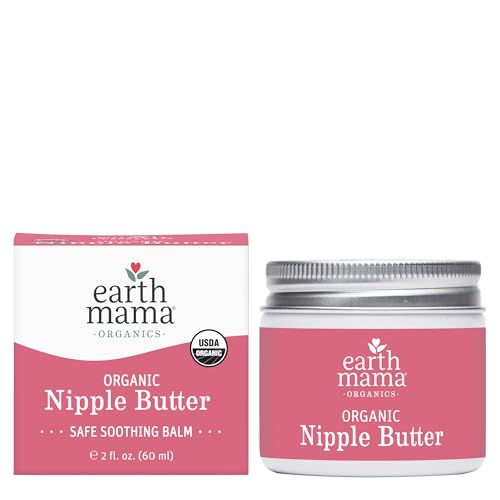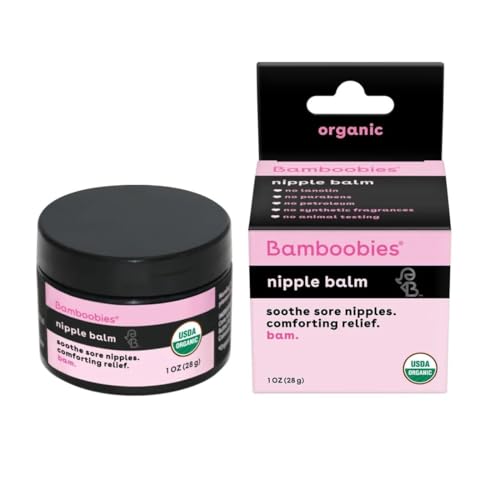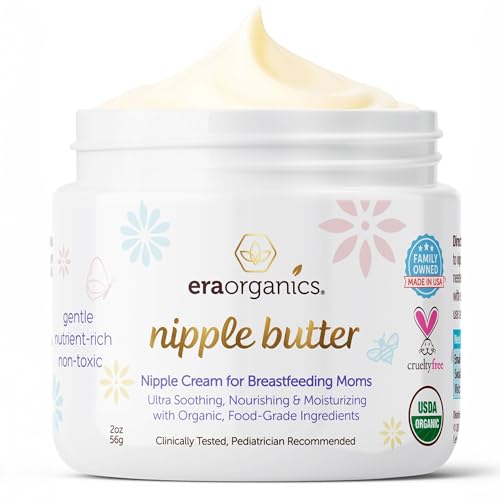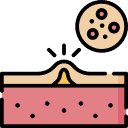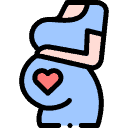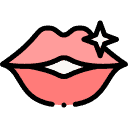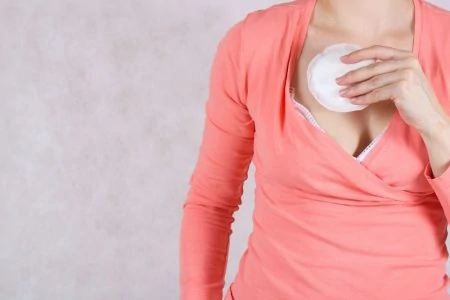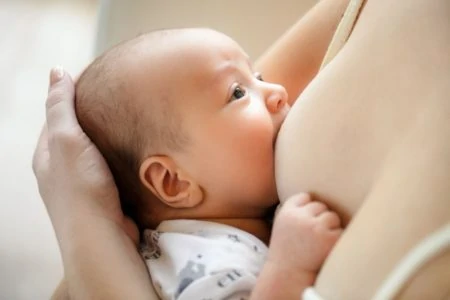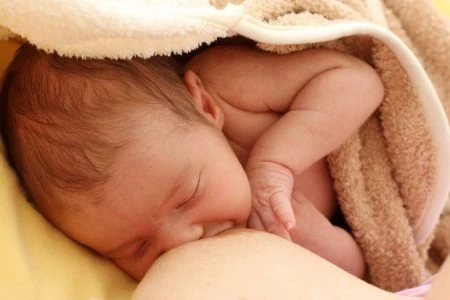If you are determined to push through the pain to continue nursing, you need the right tools. The most effective way to soothe frayed nerves and damaged skin is a high-quality nipple cream designed specifically for breastfeeding moms. We researched and reviewed the top balms and salves on the market to help you find sweet relief.
- Smooth & slick texture for easy application
- Doubles up as diaper rash ointment
- Organic ingredients safe for ingestion
- Reasonable price for parents on a budget
- Can be used on lips
- Unscented, natural & hypoallergenic
- All-natural ingredients
- Hypoallergenic ingredients to limit irritation
- Smooth formula doesn't tug tender nipples
- No sticky feeling after application
- Can be used on other areas with dry skin
- Lanolin and gluten-free
- Easy to wipe off
- Multi-purpose uses
- Food-grade ingredients that are safe for baby
- 100% organic with soothing extracts
- Doesn’t need to be washed off before feeding
- Petroleum and lanolin-free
- Quickly absorbed
- Relieves friction discomfort
- 100% safe when ingested
- Refreshing jojoba scent
- All-natural ingredients
- In a stick form for easy application
- Actively reduces inflammation
- 60-day money back guarantee
- Pleasing buttery texture
- A little goes a long way
- No strong smell
- Multi-purpose, use as lip balm or foot lotion
Why Do You Need Nipple Cream?
If you are reading this, you likely already know the sting of breastfeeding pain. Nipple cream helps treat and prevent the dry, itchy, cracked, and bleeding skin that often accompanies nursing.
Applying a high-quality balm creates a moisture barrier. This barrier promotes “moist wound healing,” which prevents scabs from forming and allows the skin to repair itself without drying out.
You may only need it for the first few weeks as your body adjusts. While you might be tempted to tough it out, there is no need to suffer. Pain should not be the reason you miss out on the benefits of breastfeeding.
Is Nipple Cream Safe for the Baby?
Most modern nipple creams are designed to be ingested safely by infants. However, you should always check the label.
Heads Up
Pay attention to active and inactive ingredients:
- Check the source: If the ingredient list looks like a chemistry exam, reconsider. Natural products are generally safer since your baby will ingest small amounts.
- Wipe off vs. leave on: Most moms prefer “leave-on” creams. If a cream requires washing off before feeding, it adds an extra step and more friction to sore nipples.
- Allergen awareness: Lanolin is highly effective but comes from sheep’s wool. If you have a wool allergy, opt for plant-based butters.
- Avoid numbing agents: Creams that numb the pain can be dangerous. They may numb your baby’s mouth, affecting their latch and feeding ability.
How to Choose a Nipple Cream
The market is flooded with options, but choosing the right one depends on your specific needs and sensitivities.
With nearly four million babies born annually in the U.S. (1), brands have developed countless formulas to help moms avoid feeling like their nipples are on fire. Consider these factors before buying.
Product Reviews
We evaluated the top options on the market to bring you the best soothing solutions.
Motherlove Nipple Cream
Best Organic Nipple Cream
Motherlove uses certified organic ingredients including extra virgin olive oil, beeswax, shea butter, marshmallow root, and calendula flower. It is 100% natural and safe for ingestion.
Unlike thick lanolin pastes, this has the consistency of a light ointment or oil. It applies smoothly without dragging on the skin. It comes in a glass jar, which is a nice bonus for moms trying to reduce plastic usage.
Pros
- Smooth application: The slick texture glides over sore nipples easily without tugging.
- Multi-purpose: You can use leftovers as a safe and effective diaper rash ointment.
- Convenient: There is absolutely no need to wash it off before nursing.
Cons
- Scent: Some babies might be sensitive to the distinct smell of olive oil.
- Packaging: The jar lacks a safety seal, which may concern some parents.
- Absorption: It feels more oily than creamy, so it may stain nursing pads or bras.
Our Ratings
Lansinoh Breastfeeding Salve – HPA Lanolin
Best Nipple Cream for Pumping
Lansinoh is the industry standard for a reason. It is a single-ingredient product made of 100% medicinal-grade lanolin. It is thick, effective, and safe for mom and baby.
This is the only cream endorsed by La Leche League International. The texture is very thick, almost like a wax or heavy gel, which creates a powerful protective barrier against friction from pumping flanges. It is hypoallergenic and preservative-free.
Moms love the heavy-duty protection it offers:
Pros
- Affordable: The price point is very reasonable for the quality provided.
- Versatile: It works wonders on chapped lips, dry elbows, and cracked heels.
- Pure: The formula is unscented and hypoallergenic.
Cons
- Sticky texture: The thick consistency can be difficult to spread on very sore skin.
- Hard to dispense: You may need to warm the tube in your hands to squeeze the product out.
- Staining: Lanolin is greasy and can leave spots on clothing.
Our Ratings
Medela Tender Care Lanolin Nipple Cream
Best On a Budget
Medela Tender Care offers a blend of lanolin, caprylic triglycerides, and oat beta glucan. This combination makes it smoother and easier to apply than pure lanolin products.
The hypoallergenic formula glides on without tugging at sensitive skin. It is safe for breastfeeding and does not need to be removed. Because it is thinner, it absorbs relatively quickly and is easier to wash off your fingers after application.
Pros
- Great value: You get nearly twice as much product compared to competitors at a similar price point.
- Easy application: The thinner texture spreads easily on tender skin.
- Baby safe: It can be used to spot-treat dry patches on your infant’s skin.
Cons
- Smell: Some users find the natural scent slightly off-putting.
- Residue: Like all lanolin products, it can leave oily marks on fabrics.
Our Ratings
Earth Mama Angel Baby Nipple Butter
Best Natural Nipple Cream
This butter is lanolin-free, making it ideal for vegans or those with wool allergies. It uses organic calendula, cocoa butter, and olive oil to soothe cracked skin.
It is Non-GMO Project Verified and safe for ingestion. The texture is buttery rather than sticky, and it works excellently as a pump lubricant. It is also famous for fixing cradle cap and dry cuticles.
Pros
- Non-sticky: Moms appreciate that it absorbs without the tackiness of lanolin.
- Clean ingredients: It is non-GMO and gluten-free.
- Smell: It has a natural cocoa scent that many moms find pleasant.
Cons
- Grainy texture: The natural butters can crystalize, though they melt upon contact with warm skin.
- Packaging: The jar does not have a safety seal.
Our Ratings
The Honest Company Mama Calm Your Nip Balm
Best Without Lanolin
This organic, cruelty-free balm relies on shea butter, coconut oil, and beeswax rather than animal fats. It is food-grade and safe for nursing.
The consistency is thinner and oilier than typical balms, meaning it spreads effortlessly. However, because it comes in a jar and melts easily, be sure to screw the lid on tight before tossing it into a diaper bag.
Pros
- Lightweight: The thin consistency prevents caking and is easy to wipe off if you apply too much.
- Hypoallergenic: Designed for sensitive skin.
- High quality: Contains organic, food-grade ingredients.
Cons
- Allergen risk: Contains coconut oil, which is a potential allergen for some infants.
- Scent: The natural ingredients have a distinct smell that not all moms enjoy.
Our Ratings
Bamboobies Organic Lanolin-Free Nursing Balm
Safest for Baby
Safety is the priority here. Bamboobies uses 100% organic ingredients that are non-toxic and safe for ingestion. You save time and minimize irritation because there is no need to wash it off before feeding.
The formula blends beeswax, shea butter, and marshmallow root to soothe inflammation. It is free from petroleum, lanolin, and parabens. If you pump frequently, they also offer a specific pumping ointment to reduce flange friction.
Pros
- Organic: 100% organic ingredients offer peace of mind.
- Soothing: Marshmallow root is excellent for calming inflamed skin.
- Convenient: Leave-on formula saves time during feeds.
Cons
- Scent: It has an earthy smell that sensitive noses might notice.
Our Ratings
Mommyz Love Organic Nipple Cream
Best Pediatrician Tested Cream
When safety is your main concern, a pediatrician-tested product is a great route. Mommyz Love is USDA Certified Organic and free from toxins, dyes, and synthetic fragrances.
It moisturizes and heals without the use of lanolin. It is highly versatile and works well on baby acne, diaper rash, or dry lips. The focus here is purity and effectiveness.
Pros
- Fast absorption: It soaks into the skin quickly without requiring heavy rubbing.
- Pumping aid: Excellent for relieving friction discomfort while pumping.
- Certified: USDA Organic certification ensures high ingredient standards.
Cons
- Taste: Some babies may dislike the taste and hesitate to latch.
- Mild relief: A few users felt it was better for maintenance than healing deep cracks.
Our Ratings
Camille Beckman All-in-One Balm
Best Multi-Purpose Nipple Cream
Camille Beckman uses a cocoa butter base with only six organic ingredients. The standout feature is the TSA-approved stick applicator. You can apply it without getting your hands greasy, which is a major plus when you are on the go.
It soothes itchy pregnancy skin, dry lips, and stretch marks. The coconut oil and organic cocoa butter provide deep hydration.
Pros
- Applicator: The stick form allows for mess-free, sanitary application.
- Cruelty-free: It is vegan and never tested on animals.
- Scent: Features a soft, refreshing natural scent.
Cons
- Size: It only comes in a small 2-ounce container.
Our Ratings
e. ra Organics Nipple Cream
Best Nipple Cream for Sensitive Skin
This cream is packed with anti-inflammatory ingredients like evening primrose oil, apricot seed oil, and rosemary extract. It aims to actively heal damaged tissue, not just moisturize it.
It is free from mineral oils, alcohol, and parabens. The manufacturer offers a 60-day money-back guarantee, showing strong confidence in the formula’s healing capabilities.
Pros
- Healing properties: Actively reduces inflammation and speeds up skin repair.
- Convenient: Safe for ingestion; no washing required.
- Texture: It has a pleasant, buttery feel once warmed up.
Cons
- Stiffness: It can be waxy and hard to get out of the jar when cold.
- Sensitivity: A small number of moms reported it upset their baby’s stomach.
Our Ratings
Milkies Nipple Nurture Balm
Best Luxury Balm
Milkies Nurture Balm blends marshmallow root, calendula, and the medicinal herb “self-heal” to provide relief. It uses organic beeswax but no other animal products.
It is scent-free and gentle, making it a good choice if your baby is tongue-tied or struggling to latch. It creates a thick, protective layer that lasts.
Pros
- Concentrated: The oil-based formula is rich, so a small amount goes a long way.
- Neutral: No strong smell to bother the baby.
- Versatile: Great for dry skin on heels or hands.
Cons
- Thickness: It is very thick and can be difficult to spread on extremely painful areas.
- Quantity: The jar is small (1.5 ounces).
Our Ratings
Bella B Nurturing Nipple Butter
Also Great for Lips
Bella B is a favorite lanolin-free option made with cocoa, mango, and shea butters. It is food-grade and completely safe for your baby to ingest.
The consistency is thick, ensuring it stays on the nipple to provide continuous moisture. It is particularly good for maintaining skin elasticity and preventing cracks before they start.
Pros
- Adhesion: The thick consistency stays in place well.
- Safety: No need to wipe off before nursing.
- Multi-use: Excellent for chapped lips and cuticles.
Cons
- Tube design: The thick formula can be hard to squeeze out.
- Soothing: It lacks the immediate cooling effect some other gels provide.
Our Ratings
How Do I Use Nipple Cream?
Apply the cream immediately after your baby finishes feeding. This gives the product the maximum amount of time to soak in and heal your skin before the next latch.
Most creams listed here do not need to be washed off. While your instinct might be to clean your breasts before feeding, washing them with soap and water frequently actually dries out the skin and makes cracking worse.
Trust the “food-grade” labels. If the cream is safe for ingestion, leave it on. This reduces friction and keeps the moisture barrier intact.
Remember
DIY Alternatives
If you prefer to make your own remedies, you have options.
Your own breast milk is the original nipple healer. Express a few drops after feeding, rub it into the nipple, and let it air dry. It contains natural antibodies and fats that soothe the skin.
Other simple home remedies include:
- Oils: Pure coconut oil or olive oil are safe, effective moisturizers found in your pantry.
- Honey: A tiny dab of medical-grade honey can help prevent infection in open cracks.
- Air drying: Let your breasts air dry after feeding rather than toweling them off to reduce irritation.

